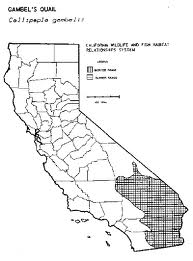Scienceblogs is to promote writing of "Science 101" overall post all through the "back to school" from September. So, here's first multi-part series on the heat capacity is Biology:
Heat capacity in Biology 101: What is it?
Heat capacity is essentially constant proportion. For each substance, heat capacity tells you how much material will change the temperature when you add a specific amount of heat.
Heat capacity is essentially constant proportion. For each substance, heat capacity tells you how much material will change the temperature when you add a specific amount of heat.
capacity of heat in Biology video
Here's a very nice schematic image of the heat capacity difference between small and large heat capacity (from a website on the physics of the behavior of X-ray tube) note that the temperatures used in the picture are a little outside the temperature range Biologists generally interested,
but this figure shows the concept is still very good). When you boil water, water temperature stays at 100 degrees Celsius, regardless of how much heat you add, until all boiling away. Heat capacity of water approaching infinity at this point: can the amount of heat absorbed monsters, but temperatures will remain the same. The typical behavior of phase change material is for.
But before you boiling point, water temperatures increase as you add heat. In fact, each milliliter (cubic centimeters) of water one degree Celsius for every calorie of heat to increase your input - and this is in fact defined as calories.
"Thermal capacity" is one thing, "Heat Capacity Change" is something a little different:
When no material changes (eg when the phase change, eg in boiling water, or if through a chemical reaction, change, etc.) as well as their heat capacity change often - and then "change in heat capacity "Or get ΔCp. ("P" here represents the constant pressure - from the biological reactions in almost all standard atmospheric pressure occurs, the thermodynamic state functions used in biology almost always the constant pressure rather than constant volume forms).

When no material changes (eg when the phase change, eg in boiling water, or if through a chemical reaction, change, etc.) as well as their heat capacity change often - and then "change in heat capacity "Or get ΔCp. ("P" here represents the constant pressure - from the biological reactions in almost all standard atmospheric pressure occurs, the thermodynamic state functions used in biology almost always the constant pressure rather than constant volume forms).


Nomenclature Warning: Although the "heat capacity" and "Heat Capacity Change" really different (one is fixed, the other between two fixed) - two words used interchangeably in the literature is often - at least in biology, if Judgement is talking about the heat capacity, it almost always located in the "heat capacity change" speaks.
Protein, protein, protein interactions, protein-DNA binding, etc., all have measurable changes in heat capacity (just like the heat capacity change between liquid measure: So almost any response you may Biology is the study will change the heat capacity of water and gas exhibition) - ie, all the processes and materials with a thermal capacity (raw) before reaction and the reaction of different posts, and the difference between pre and post = ΔCp.Heat capacity and heat capacity changes are the "thermodynamic state functions" - the fundamental properties of a substance or a balanced response system - just like the free energy (ΔG), enthalpy (ΔH) and entropy (ΔS), among others is.
Protein, protein, protein interactions, protein-DNA binding, etc., all have measurable changes in heat capacity (just like the heat capacity change between liquid measure: So almost any response you may Biology is the study will change the heat capacity of water and gas exhibition) - ie, all the processes and materials with a thermal capacity (raw) before reaction and the reaction of different posts, and the difference between pre and post = ΔCp.Heat capacity and heat capacity changes are the "thermodynamic state functions" - the fundamental properties of a substance or a balanced response system - just like the free energy (ΔG), enthalpy (ΔH) and entropy (ΔS), among others is.
capacity of heat in Biology video-2
Conclusion of Part 1: Wow, you can say (for example) measure the difference in heat capacity of proteins and DNA before and after they bind to each other (drum roll ...) who cares ? (Or as Julia doctor might say: "I am a biologist Jim, why do not you me about the frigging heat capacity to talk?") Well, stay tuned for part two, coming up soon (very soon, because most of us who work on any aspect of the heat capacity know that no connection to the earth or something Molecular, many people like it very warm weather sounds).
Here's a link to a song called heat capacity, which seems to have nothing to do with heat capacity:







No comments:
Post a Comment